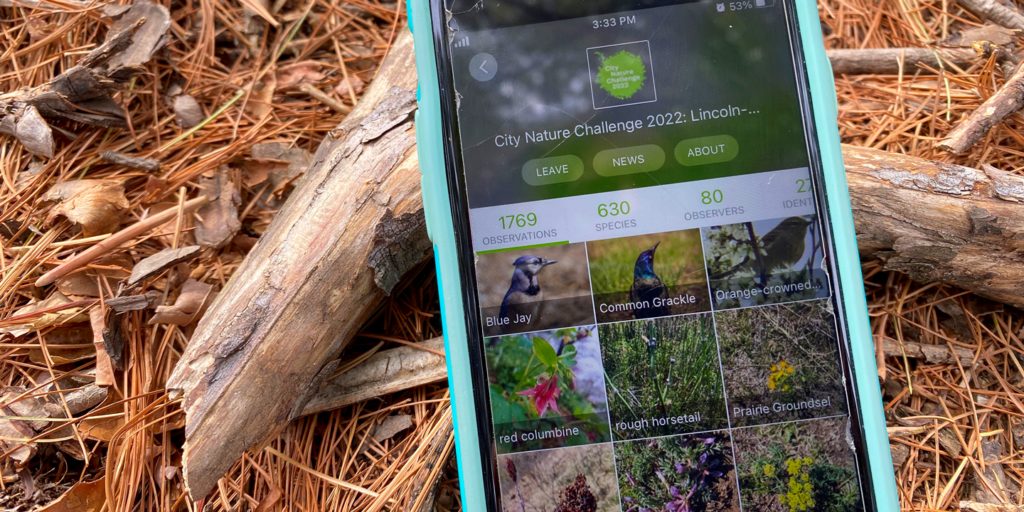
By Brianna Nugent, Educator
Urban growth, agricultural expansion and other human activities have forced most of Nebraska’s wildlife into small remnants of their once extensive habitats. If that is the case, why are rabbits nibbling on our flower beds, foxes roaming the streets and racoons rummaging through our trash cans? These clever animals have found ways to coexist with us and adapt to life in the big city.
For example, animals such as coyotes, racoons and foxes have discovered that traveling through storm drains is a highly efficient way to avoid traffic and human interactions. Racoons forage through our dumpsters and trash cans to scrounge up an easy meal. Scientist have also discovered that birds have adapted to urban environments by singing in a higher pitch so potential mates can hear their calls above the hustle and bustle of human activity. Although urban wildlife may not get as much attention as other species, for many of us, they are often our strongest link to the natural world as we see and interact with them every day.
Health Benefits of Urban Nature
Studies shows that making a connection to nature, even if for a moment, can improve cognitive function, mental health and physical health. In an article published by the USDA on the positives impacts that urban nature can have on human health, Danish researchers studied 11,200 adults and determined that living in proximity to nature can affect a person’s stress levels. The results revealed that there was a 42 percent increase in self-reported stress levels in those who lived more than 1 km away from a natural space, such as a park, forest, beach or lake. The same individuals scored very low on other aspects of health, such as bodily pain, mental health, vitality and overall health. They found that stress and other health concerns were significantly reduced in those who lived within proximity to more natural spaces.
Human-Wildlife Conflicts
However, cohabitation in the same urban spaces can inevitably lead to human and wildlife conflicts. For many gardeners, wildlife that munch on their carefully cultivated gardens are viewed as pests. Vehicle and animal collisions are unfortunately another common conflict, and the Midwest is one of the regions with the highest occurrences. The Nebraska Department of Transportation reported that there were 2,412 wildlife-vehicle collisions in 2020. To learn more about how to avoid vehicle collisions with wildlife, check out this article.
To help prevent less desirable interactions with urban wildlife and promote positive ones, we first need to understand the species that live in our urban areas. Gaining that knowledge can help improve our cities, reduce human-wildlife conflicts and strengthen our connection to nature. This is where the City Nature Challenge comes in to play.
Community Science in Urban Nature
The City Nature Challenge was started in 2016 by the Natural History Museum of Los Angeles and the California Academy of Sciences. What started as a small, friendly challenge to document urban biodiversity in Los Angeles and San Francisco has now become a global community science project. The overall goal of the CNC is to obtain data on what species can be found in cities around the globe and to use that information to make our urban areas better equipped to support all living things and not just humans.
Anyone around the world can participate in this colossal community science project, and all you need is your phone. The CNC is broken up into two parts: the observation period (April 28–May 1) and the identification period (May 2- May 7). During the observation period, participants seek out as many living organisms as they can find in their cities. Animals, plants, lichen, fungi and insects all fall under the “living organism” umbrella. The next step is to upload photos and observation information to iNaturalist. In the final phase, experts and participants work hard to review and identify species that were found during the observation period.
Last year in Nebraska, there were over 3,000 observations submitted, and 891 species were identified during the CNC. Of those, over 20 species identified last year were considered species of greatest conservation need in Nebraska. With your help, we can beat last year’s numbers and learn even more about the resourceful species that share our urban spaces! For more information about the City Nature Challenge in Nebraska, visit the Nebraska Game and Parks webpage.
